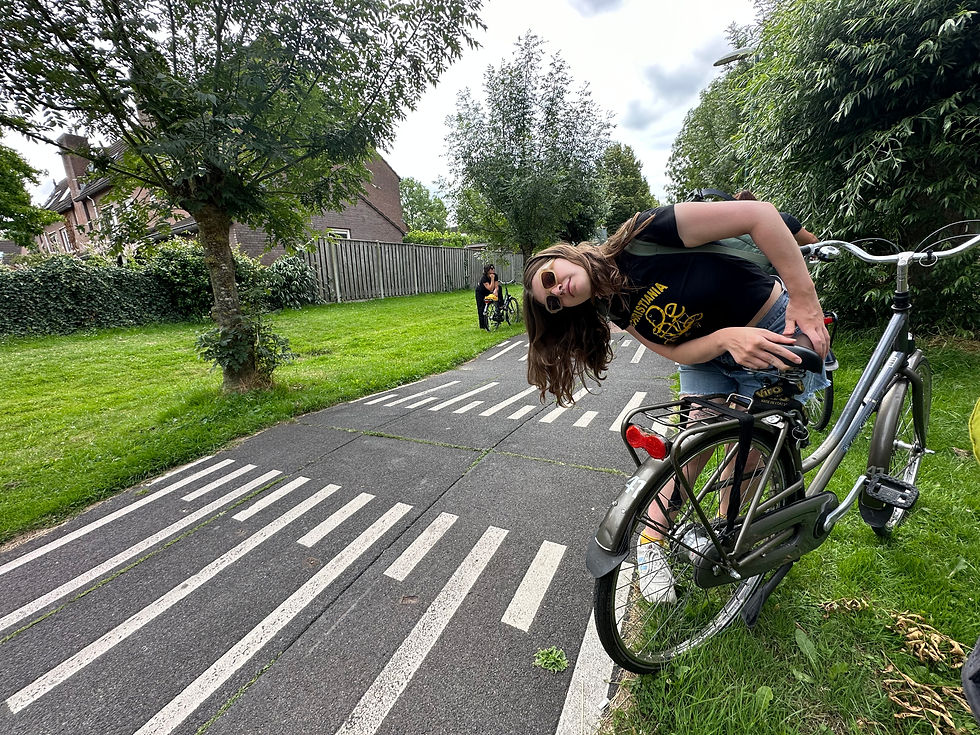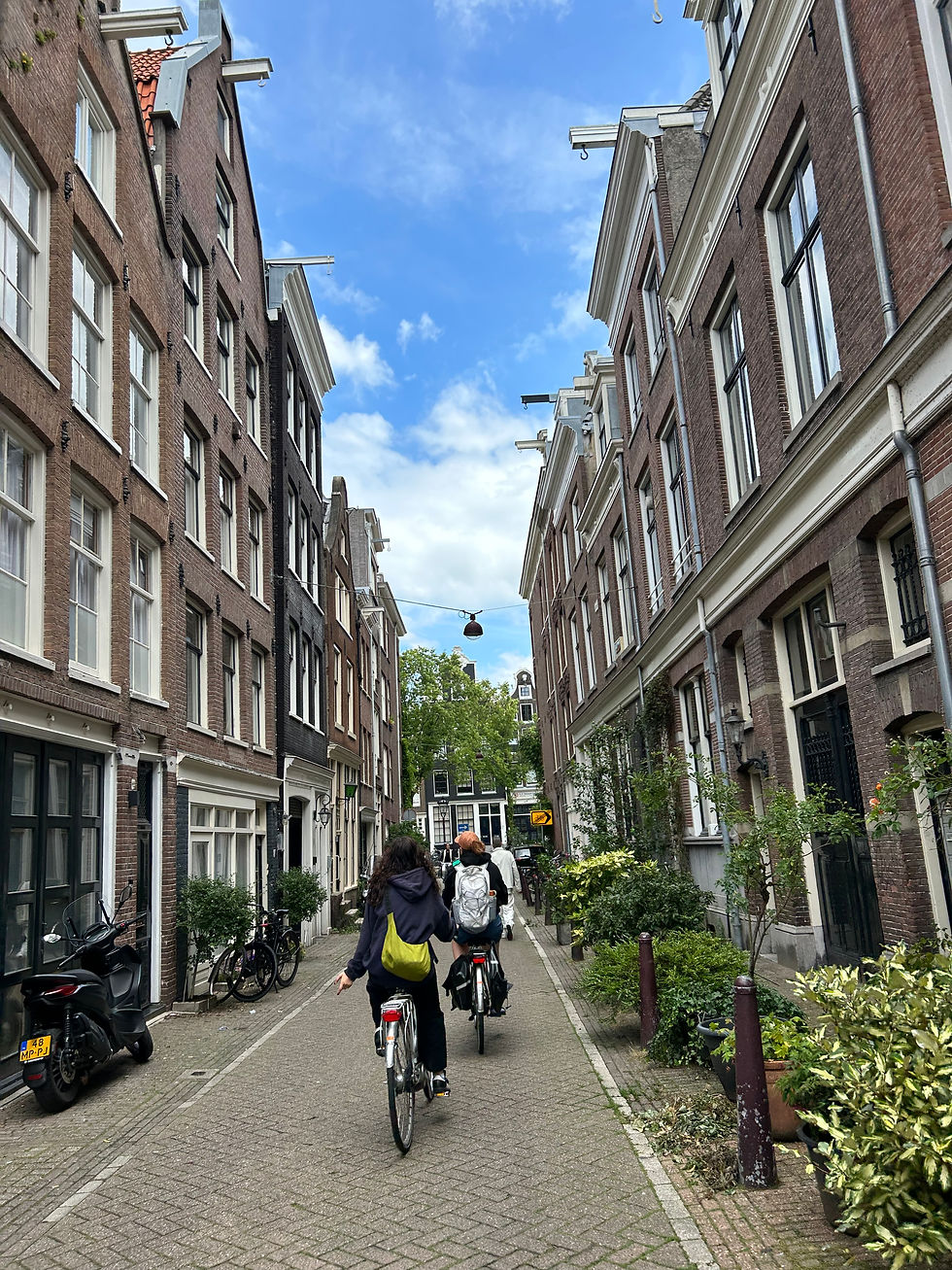Biking to Germany and Reflecting on Nijmegen (unstructured)
- emmameyer22
- Jul 15, 2023
- 3 min read
When we were in Nijmegen a group of us decided to bike to Germany. We were only ten miles away from the border. The entire ride had connected bike paths and bike lanes all the way there. There was a bike path along the old railway tracks. We got lost in the beginning because we couldn’t find the start to the path so we were biking on the narrow unpaved hiking trail. It was a challenge to go off road with city bikes. Once we found the path it was a smooth ride to Germany. Almost every cyclist we passed was an elderly person on their bike or mobility scooter. It was amazing to see a path in such a rural place getting so much use especially by a population that is stereotypically imobile in the United States. Accessible bicycle infrastructure allows for mobility, freedom and independence of people who are otherwise restricted to vehicles and dependent on others to get around. If we continued past the border we would have ended up in a small German town, but instead we turned around and biked ten miles back to the hostel. As someone who does not bike recreationally, I found it easy to bike twenty miles. The bike path made the ride stress free as I never once thought about an interference with a vehicle.

We were only in Nijmegen for a couple of days. We got a tour from two city planners from the city who explained the bicycle networks and pointed out the imperfections and flaws of some projects. We stopped at an intersection in front of the university where a student was killed nine months ago. She was biking straight to enter the university and a truck was turning right at the same time. It is still legal for vehicles to make a right turn when cyclists are crossing the street. There was a ghost bike at the intersection where the student was killed, however no action has been taken and according to the planner nothing will be changed. The death resonated with me for a few reasons. Traffic deaths are the result of policy and as someone going into the field of planning, planners and policy makers are directly responsible for the loss of innocent lives. Secondly, a student was recently killed on the street leading up to Cal Poly a few months ago similar to the death of the student in Nijmegen. He was on his bike going straight and a car was turning and killed him. I went to the memorial and the active transportation meeting where city officials and planners gave their condolences and “wished they could do something.” As planners we have the power to design streets that prevent cyclists from being murdered by cars. Streets should not be dangerous for cyclists or for cars. In January my friend was killed in a car accident. The width of the street, the infrastructure, signage, and accessibility determine who should be there and how fast you should be going. I was shocked to see that a Dutch city had the same response to traffic deaths as a city in the United States. When cars dominate the street, the sentiment is that cars will and should be prioritized.
I have enjoyed biking on streets that prioritize bikes. It feels like I should be there and I should be biking. In SLO I am fearful to bike because I don't feel welcome as a cyclist. It is terrifying to bike on a street where a fellow student was killed. At the meeting I went to the planners acknowledged that the street is one of the top twenty most dangerous streets in SLO and had the possibility of death and collision for cyclists. That should not be something we accept as planners.








Wow, I didn't realize the student who was killed in SLO was in a similar situation to what we learned in Nijmegen. While it is 'depressing' to have learned that Nijmegen city officials were in no hurry to fix the situation just as in SLO, you are right to demand that planners (and others) have a moral responsibility and the capacity to actually make changes that could prevent such things from happening.